Sight word worksheets – based on the science of reading!
Are you on the hunt for sight word worksheets? Check out our set for 240 sight words … in two levels of difficulty. Bonus – they align with the science of reading!
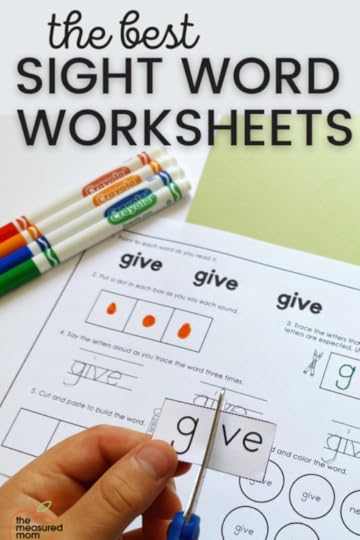
Have you been following along with our sight word series? This post is the 7th in a ten-part series.
So far, we’ve shared:
The difference between sight words and high frequency wordsThe difference between the Dolch and Fry word listsHow to teach sight wordsWhether or not we should teach sight words in preschoolSight words organized by phonics skillHow to choose kindergarten sight wordsToday we’re going to look at how to choose the best sight word worksheets.
How to choose sight word worksheetsChoose worksheets that draw attention to the individual sounds in each word. We know that this is how we “map” words into our brains – by matching those sounds to the letters. So a good set of sight word worksheets will draw attention to those sounds.Choose a worksheet that gives students practice writing the sight words. This may not be a favorite student activity, but writing those words is so important!
Avoid worksheets that have boxes for writing the letters of different heights. I’m sure you’ve seen them – they’re everywhere. But time and again, I’ve heard reading experts say that this is pointless. It promotes memorizing words as wholes, and that’s NOT how the brain learns to read.
Choose worksheets that call attention to the irregular parts of the word (if there are any).
I’ve designed our new high frequency word worksheets to fit ALL these criteria!
Let’s take a look!
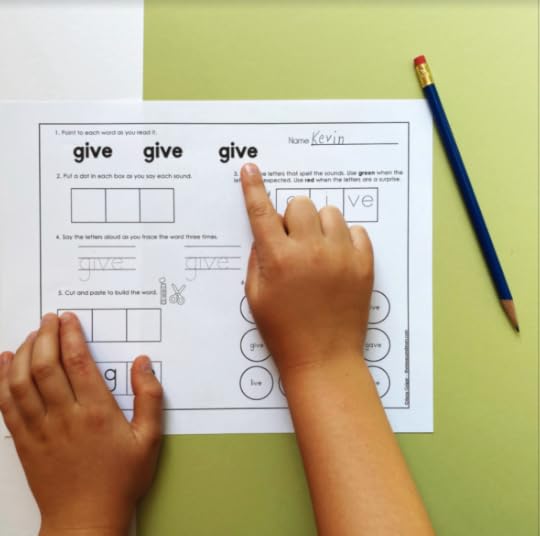
First, students point to the high frequency word and read it aloud, three times.
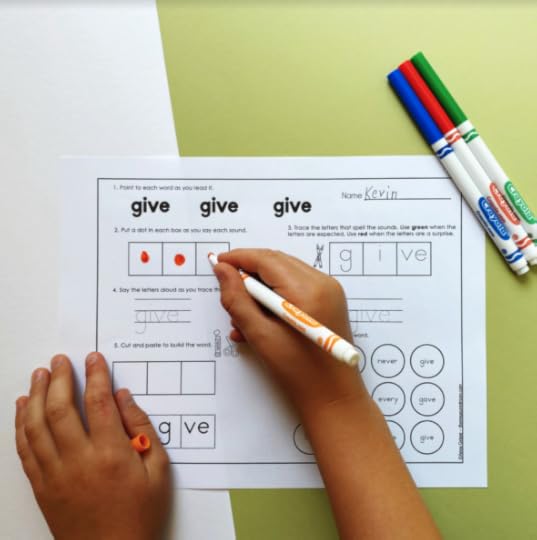
The next step is something that most sight word worksheets don’t address: counting the SOUNDS in the sight word. In the above example, the student is drawing a dot for each sound: /g/ /i/ /v/.
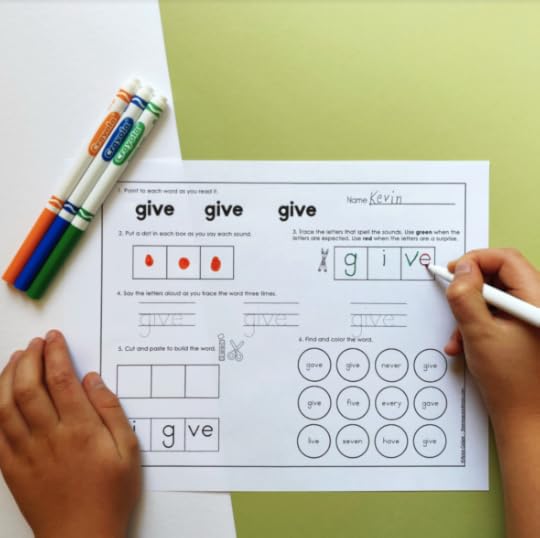
In this step, trace the spelling for each sound in the word. You’ll notice that “ve” are in a single box because both letters work together to make the /v/ sound in “give.”
We draw students’ attention to the surprising parts of the word by having them color the expected spellings in green and the unexpected spelling(s) in red.
In the above example, we don’t expect that “e” to be there, because the i isn’t long like it is in most CVCE words.
Please note that students will color code differently, depending on where they’re at with their phonics knowledge. Some students may know that English words don’t end with v, so to them that e isn’t surprising at all!
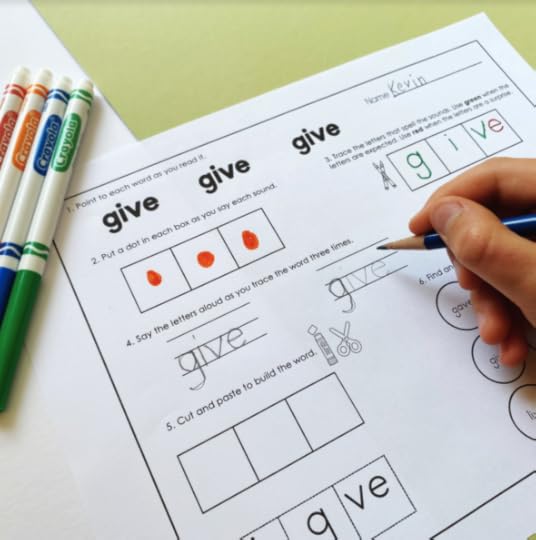
Time for handwriting practice! Not everyone’s favorite, but it’s very important to practice writing the word. We need to be able to spell it as well as read it!
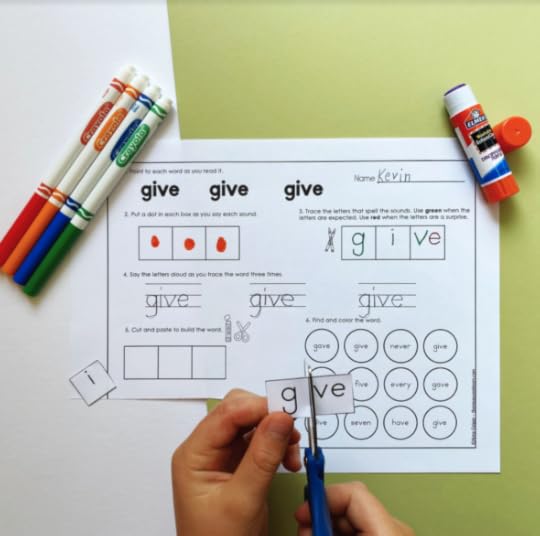
In the Level One version of our worksheets, students cut apart the word, sound-spelling by sound-spelling.
Notice that I did NOT say, letter by letter.
It’s important for students to see that more than one letter can be used to represent a single sound.
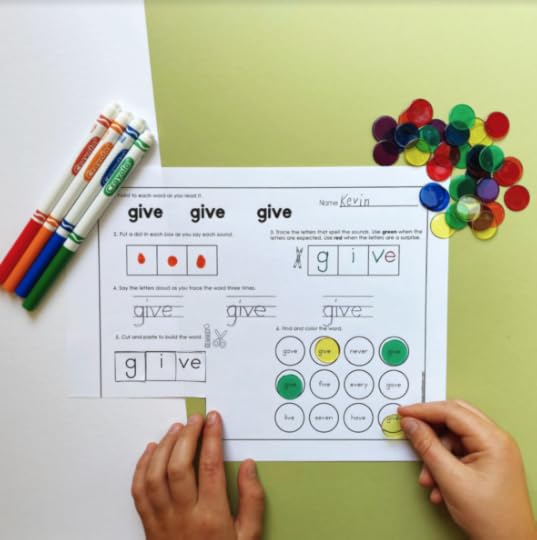
After students have glued the letters down, they have a fun little break with the word find activity. They can cover the words with clear counters or color with marker or crayon.
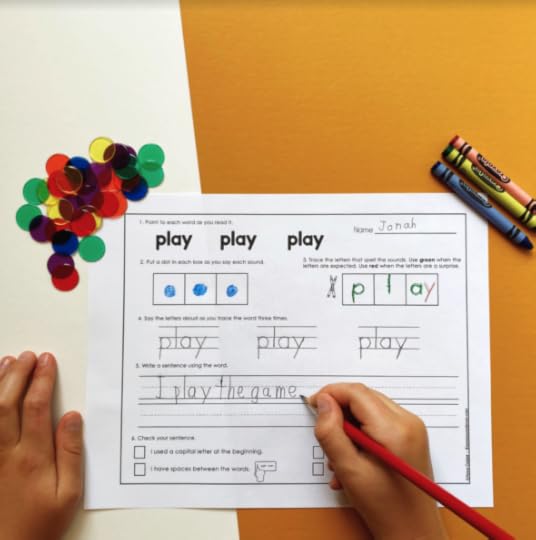
Our sight word worksheets include TWO versions of each worksheet. In the level 2 worksheet, as you can see above, students do not do the cut-and-paste or word find activity.
Instead, they write an original sentence and use the editing checkboxes in number 6 to check their work.
Answers to your questionsWhich words are included? Both versions include worksheets for 240 high frequency words. They include the words from Dolch’s list of 220 words and Fry’s first 100, plus a few extra. View the complete list here.Is the file easy to use? I don’t have time to scroll through 240 words every time I need a worksheet. You bet it’s easy! We have a clickable table of contents near the beginning of the file. Just click on the word you need, and you’ll jump right to it!
How do I know which words to start with? It’s best to teach the words alongside phonics instruction whenever possible. So I would think about which phonics skill you’re teaching and then teach sight words that align with those skills. This way students’ focus is on the letters themselves and not on memorizing words as wholes (which can only be done for so long … eventually the brain gets overwhelmed). Inside the file you’ll find a list of the 240 words organized by phonics skill to help you out!
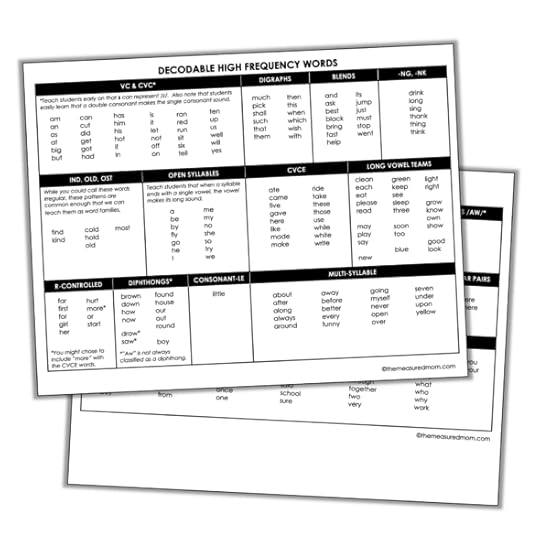 These helpful charts are included with your purchase.What age are these worksheets for? I recommend teaching high frequency words to students who already have some ability to sound out words (even if it’s just basic 3-letter words). Once children have important pre-reading skills in place AND show an ability to sound out simple words, they are ready for some of these worksheets. This will include some (but definitely not all) pre-K students, most kindergarten students (by mid-year), and children in first, second, and third grade.
These helpful charts are included with your purchase.What age are these worksheets for? I recommend teaching high frequency words to students who already have some ability to sound out words (even if it’s just basic 3-letter words). Once children have important pre-reading skills in place AND show an ability to sound out simple words, they are ready for some of these worksheets. This will include some (but definitely not all) pre-K students, most kindergarten students (by mid-year), and children in first, second, and third grade.How do I know if my preschooler is ready for sight words? I wrote a blog post to answer this very question! You can find it here. Ready to get started?
Get the full set of 240 worksheets!
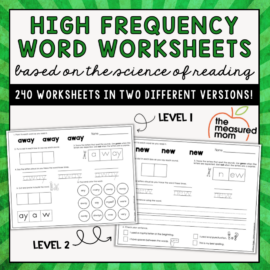
Sight Word Worksheets – Based on the science of reading!
$15.00
You’ll get two versions of each worksheets, with a clickable table of contents so you can quickly find the word you need!
Buy Now
Have you seen the rest of our sight word series?
Part 1 Part 2 Part 3 Part 4 Part 5 Part 6 Part 7 Part 8 Part 9 Coming soon
The post Sight word worksheets – based on the science of reading! appeared first on The Measured Mom.
Anna Geiger's Blog
- Anna Geiger's profile
- 1 follower



